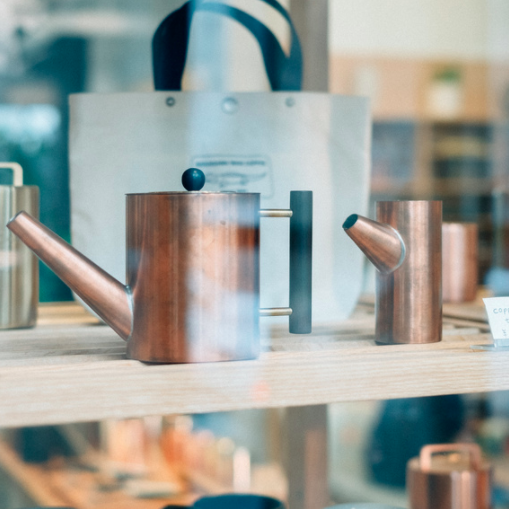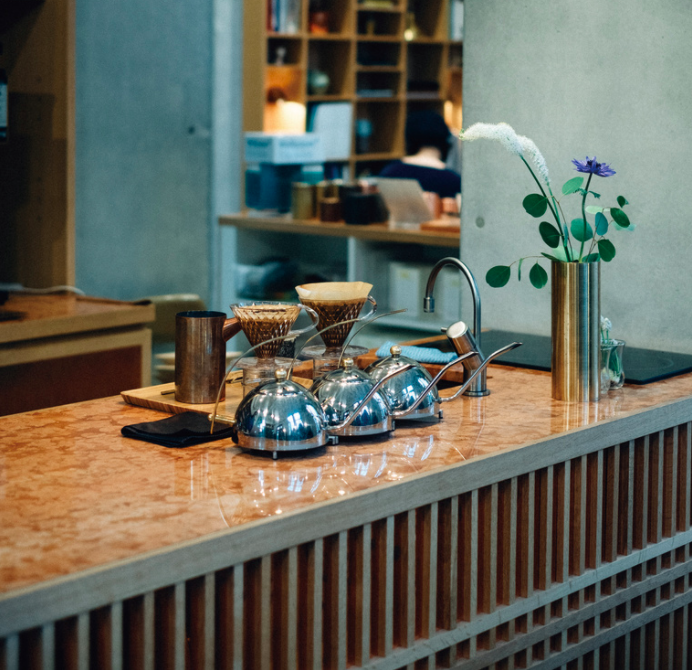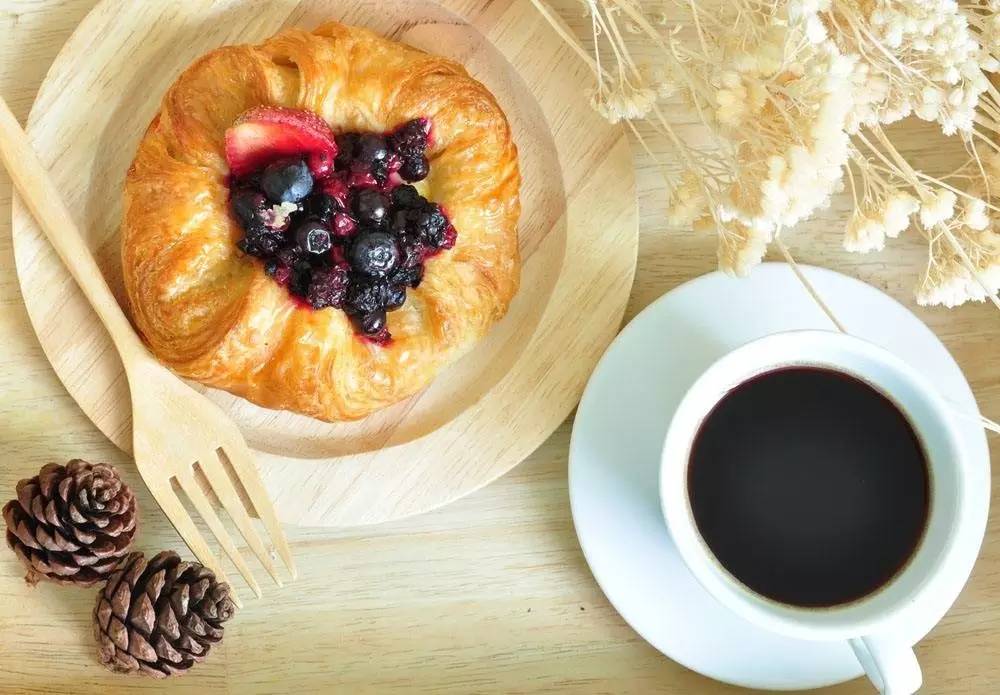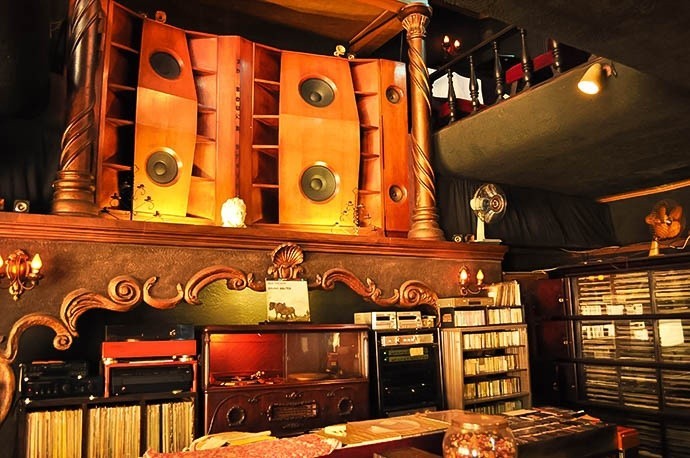The evolution of "Kaikado Caf é" craft and aesthetic feeling, the combination of tradition and innovation
one

For professional baristas, please follow the coffee workshop (Wechat official account cafe_style)
The latest trip to Kyoto was an unplanned trip to re-learn about this wonderful ancient capital from the moment the night bus got off, but one of the places had to pay a visit anyway. For a long time before departure, the name "Kaihua Hall" often appeared in the magazines introducing Kyoto. In addition to welcoming the opening of the handmade tea tube brand for 142 years, the wish of the previous generation was finally realized by the sixth generation of Yagi Takagi, the coffee shop brand "Kaikado Caf é" opened in the town of Seven Rivers in Kyoto.

A century-old tea set shop launched a new page of the brand by a Western-style coffee shop, highlighting the character of Kyoto people who stick to tradition and never rest on their laurels. It is true that it is not too early to try this step, but it has been very successful, no matter in terms of craftsmanship, design, and beauty. Fortunately, I was able to come and feel the combination of tradition and innovation.

Over the years, the number of tourists to Kyoto has reached an astonishing number. Traditional tourist areas such as Wuwan, Kawahara-cho, and only Park are already too crowded and inelegant, and those who know more about Kyoto have gone to Dongshan and Zuojing District. However, in the seven areas not far from Kyoto Station, it is rare to give Kyoto people a real living environment. This desolation indirectly preserves many nearby medieval buildings that are not thousands of years old, forming a unique Showa feeling of living with foreign countries. "Kaikado Caf é" is located here and rebuilds the historical buildings of tram companies and garages in the past. It has something to do with the direction of positive change.

Kyoto is a magical place, making a teacup alone is enough to operate for more than a hundred years, but its simple appearance may offend the details behind the teacup. Since Meiji 8, the first generation of workers have developed an ingenious process that goes through at least 130 processes, including cutting, grinding, pressing, hammering and welding. beat metal such as tin, tinplate and brass into airtight teacups. Among them, relying on the manual feeling and experience of the staff, and the sonorous sound of the hammer reverberating one after another, is the basis for the adjustment of the staff.

After the new generation of heirs took over, they are even more unwilling to stay at the level of technology, develop containers for different ingredients, and actively develop products with designers from all over the world. No wonder the brand "Kaihua Hall" has been found in places such as Paris and Milan, and even Margaret Howell in the UK has put it on sale in its stores.

In Kyoto, which actively maintains the image of the ancient capital, it is never easy to build new buildings, so "building regeneration" has become a necessary keyword. "Kaikado Caf é" itself is an excellent case of regeneration, which comes from the local construction city firm "Yangmei", which carefully preserves the details of the original "Old Beijing Electric Shore Line Office" and re-strengthens the construction of the building. The indoor space used to be the location of the streetcar garage, so you can probably imagine how the city electricity came and went in the past.

After the regeneration of the old building, the interior design part of "Kaikado Caf é" comes from the Danish design studio "OeO], which once cooperated to launch the products. They, who have a lot of knowledge of Japanese culture, use modern simple lines to combine textured and more natural materials with each other, achieving no more, no less, just providing Kaihua Hall with a stage to show its charm.

In addition to the building, "Kaikado Caf é" is also a place where Kyoto and even Japanese arts and crafts are gathered. The food is filled with exquisite woodware from "Nakagawa Mugong Yun Biliang Workshop". Bamboo tableware is produced by the "Kao Kan", and the coffee extraction tool is the "golden net" that has received renewed attention in recent years. Even the cloth curtain used by the glass window is a "fine tail" woven by Kyoto West Front, and it is full of details everywhere.

Not only that, the choice of tea in the store also comes from different places. Matcha from Marujiu Hill Garden, Yulu Yanjin from Li Zhaoyuan Tea Shop, and black tea from British "Postcard Teas" are all the names of Dangdang, not to mention that very delicious piece of cheesecake comes from Naisu. It is worth mentioning that when each guest sits down, the glass used to serve the water is so beautiful that it will soon become a collection in the family if it is not a little expensive.
Kaikado Caf é
Yoshimachi 352, Seven Shangtiao, Kawamatsu, Lower Beijing District, Beijing
Important Notice :
前街咖啡 FrontStreet Coffee has moved to new addredd:
FrontStreet Coffee Address: 315,Donghua East Road,GuangZhou
Tel:020 38364473
- Prev

[collection] how should boutique cafes match coffee and dessert?
Professional baristas please follow the coffee workshop (Wechat official account cafe_style) in more and more boutique cafes, you can see more and more varieties, production areas, processing methods of boutique coffee, you can also enjoy a variety of extraction processes: Italian, hand, siphon, ice droplets, cold bubbles, and in these boutique cafes, most of them are of professional quality and
- Next

Shibuya, a world heritage music coffee shop, is famous for eating tea.
For the exchange of professional baristas, follow the coffee workshop (Wechat official account cafe_style). In the 1950s and 1960s, a coffee shop called "Mingqu eating Tea" was very popular in Tokyo. In addition to the coffee itself, the focus of this kind of cafe is mainly on classical music. The high-priced speakers and vinyl records are unmatched by ordinary families, and people are willing to go out and sit in the cafe.
Related
- What documents do you need to go through to open a coffee shop? coffee shop coffee shop certificate processing process
- How to purchase Coffee beans in small Cafe how to choose a suitable supplier for domestic Coffee supply Company
- How to drink Starbucks Fragrance White Coffee? how to make Australian White Coffee? what Italian coffee beans are recommended?
- The Story of Flora Coffee: the name of Flora Coffee Bean and the implication of the Flowers on Florna Coffee
- How much does a cup of coffee cost? How much is the profit of a cup of coffee? What is the profit of the coffee shop in a year?
- Yunnan small Coffee, known as "fragrant Coffee", introduces the characteristics of Alpine Arabica Coffee producing areas in Yunnan, China
- 2023 latest Starbucks full menu price list how much is a cup of Starbucks coffee what is better to drink the most popular hot and cold drinks recommended
- Starbucks different kinds of Coffee Price list Starbucks menu 2023 Top Ten Best drinks in Starbucks
- Starbucks Spring praise Comprehensive matching Coffee Bean theme Story Packaging implication and taste description
- The cost of a cup of coffee latte American coffee cost price and selling price

